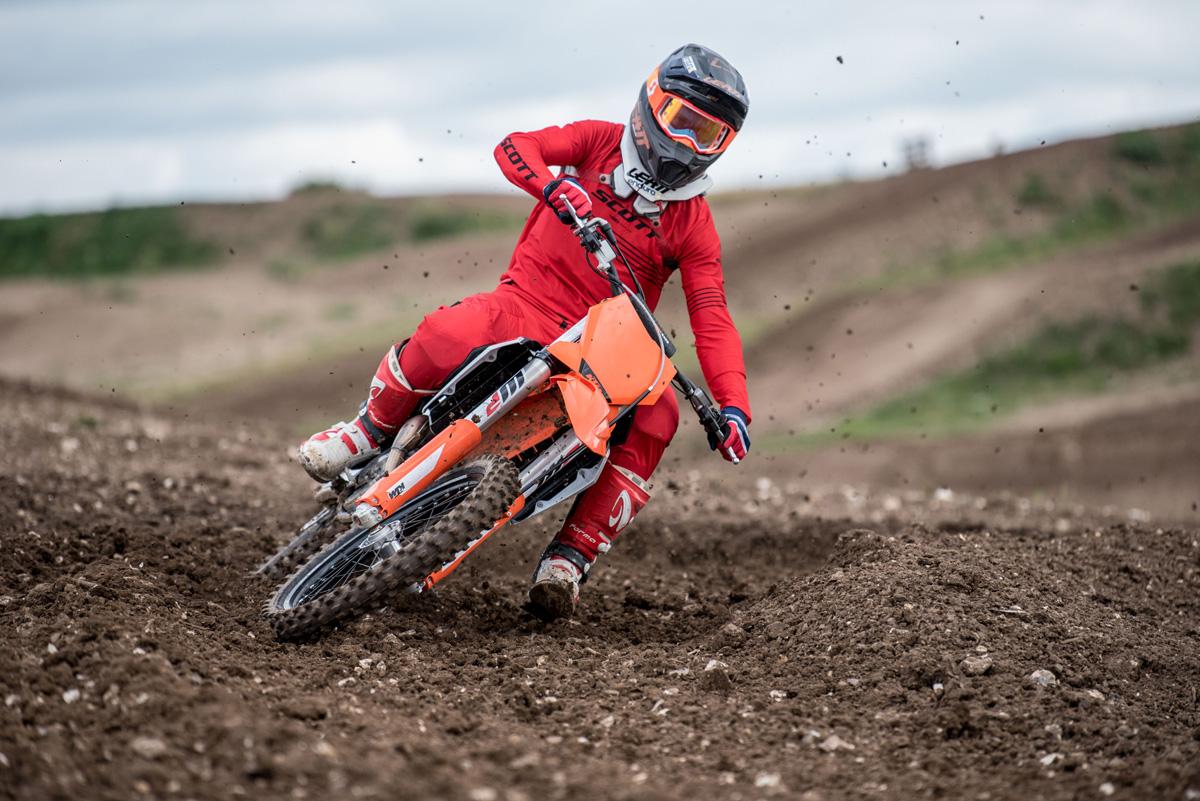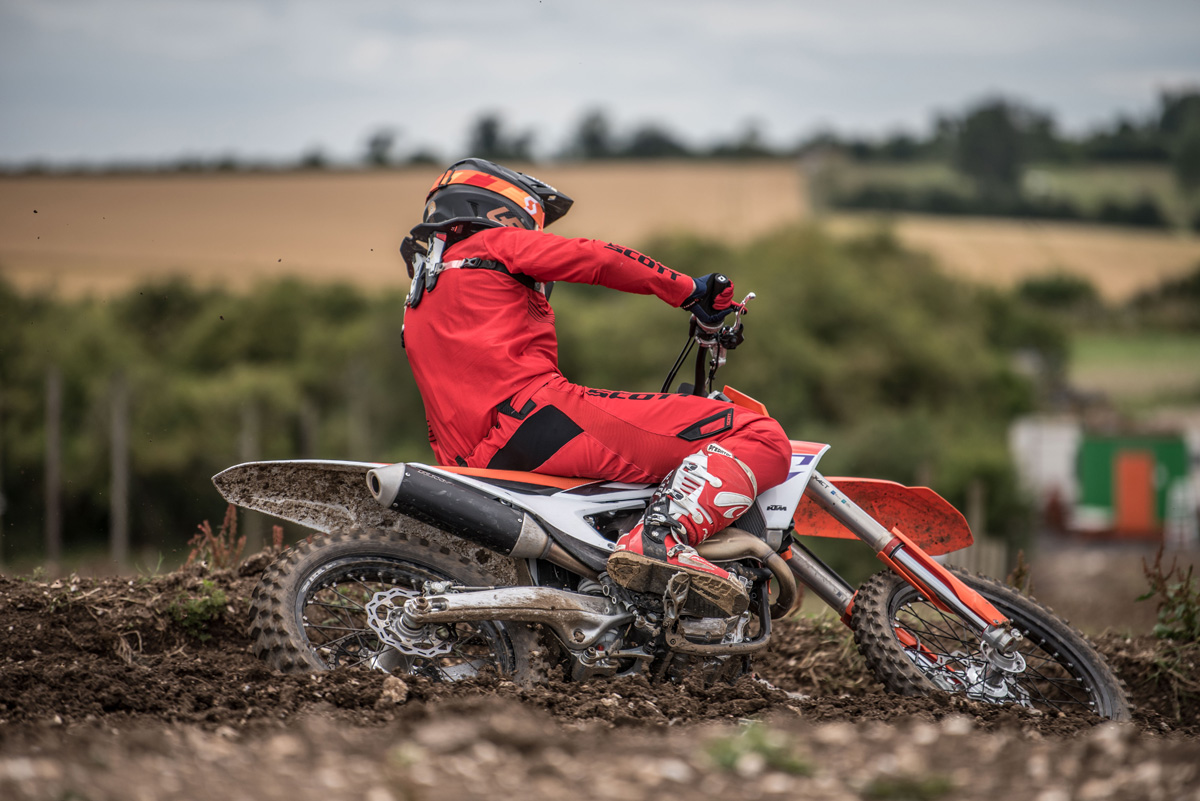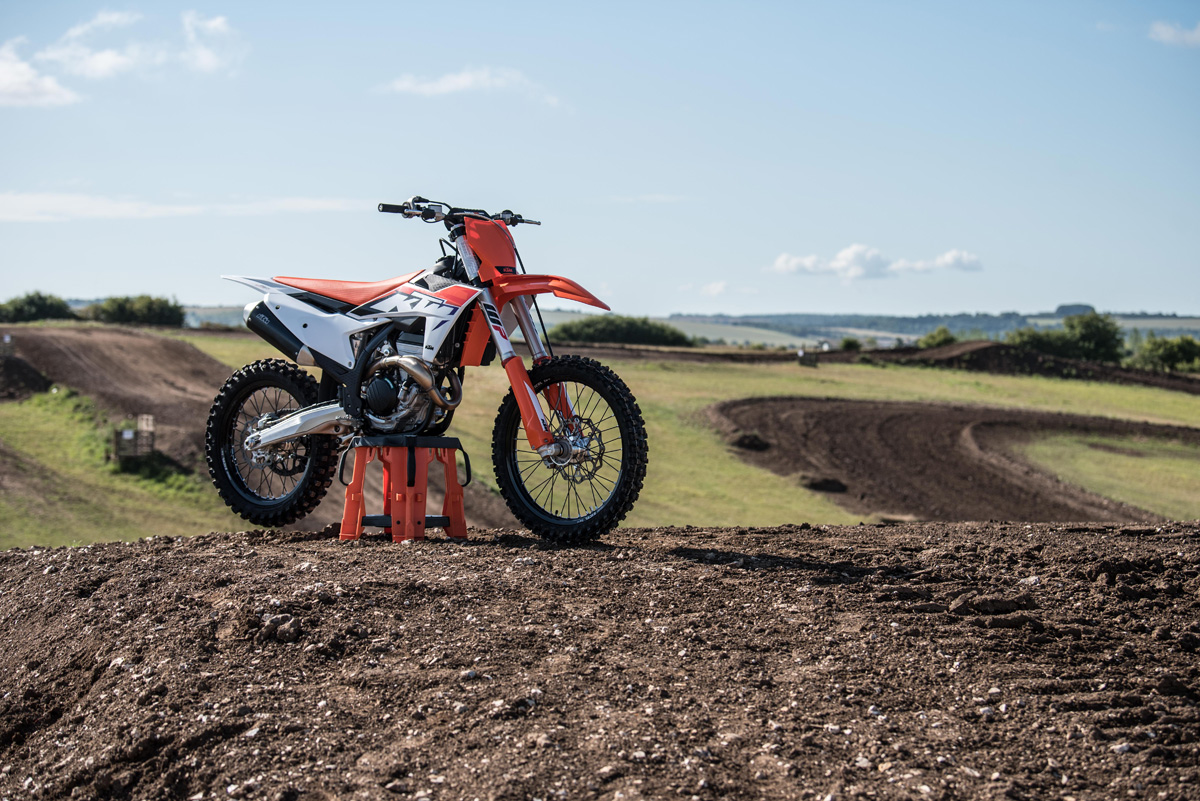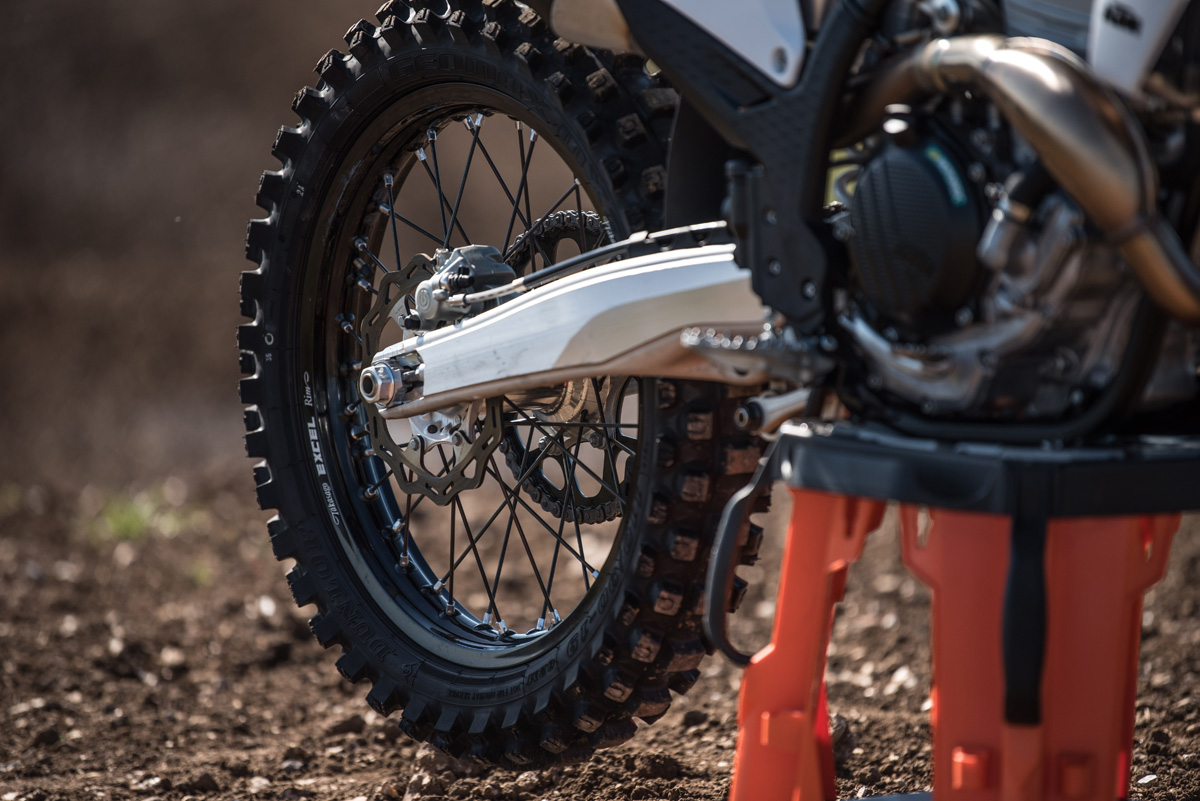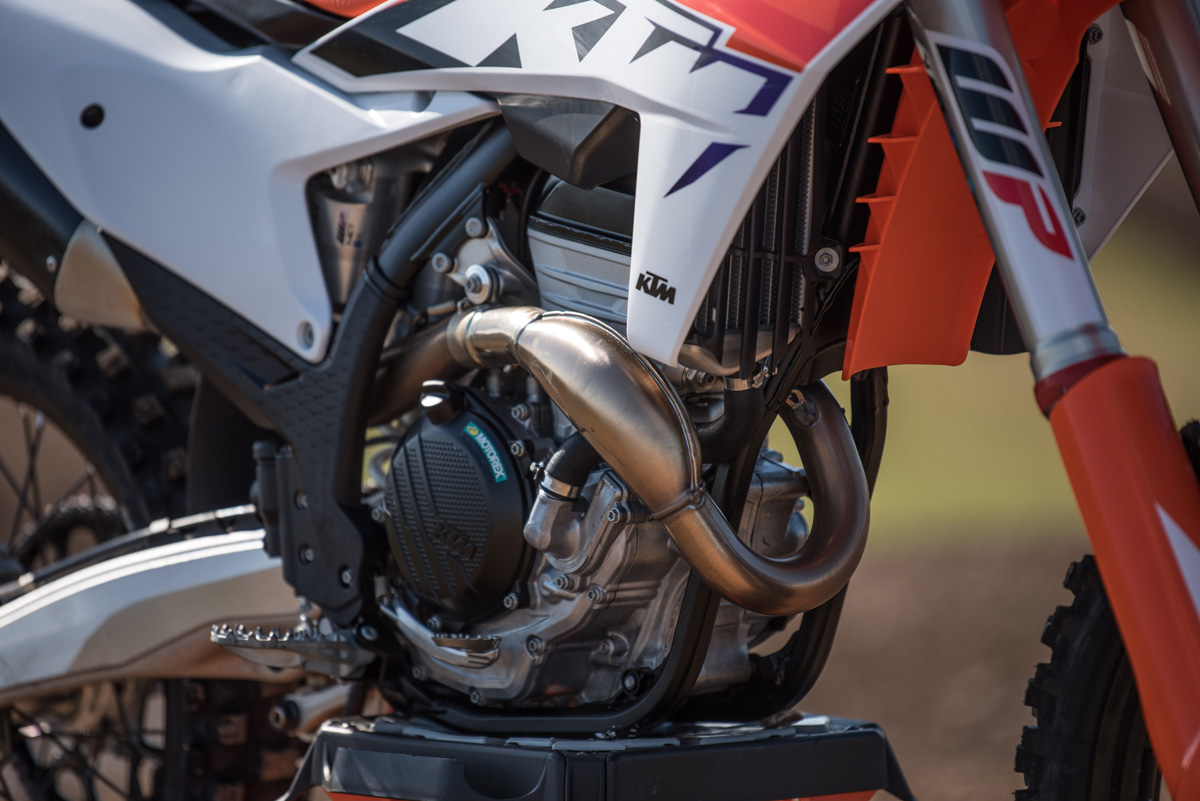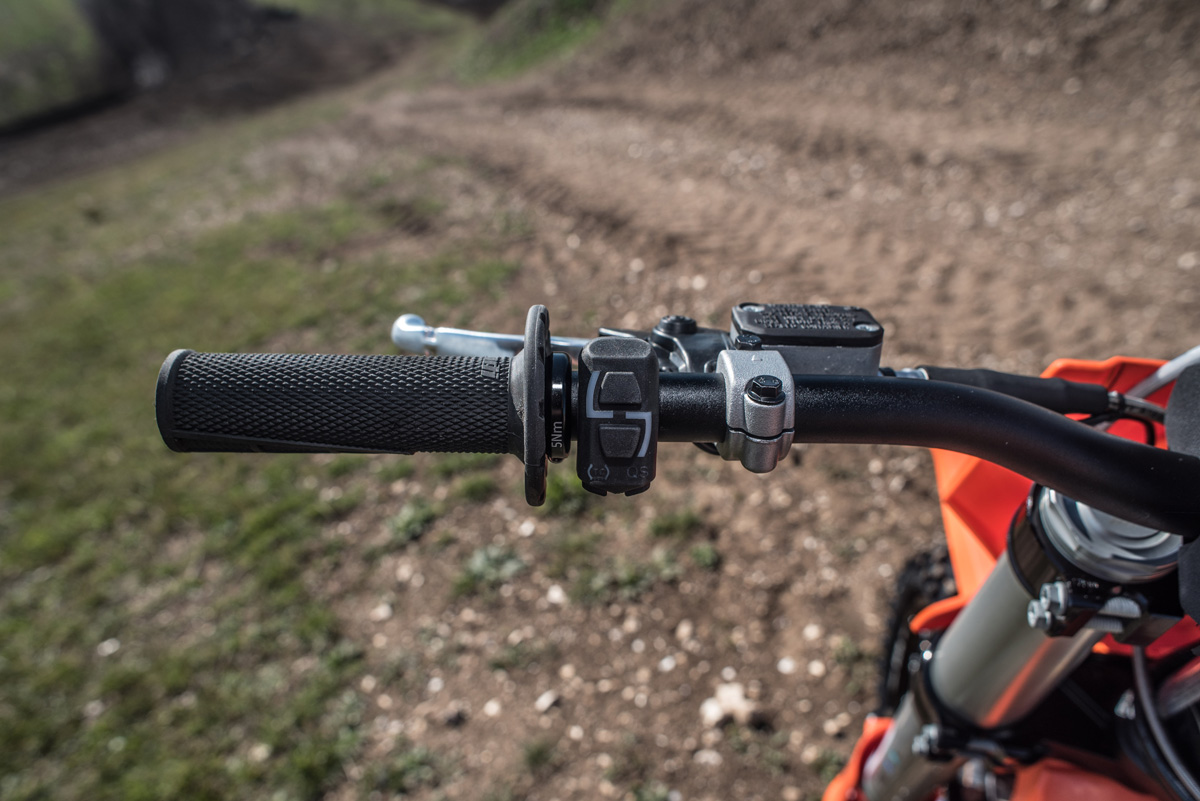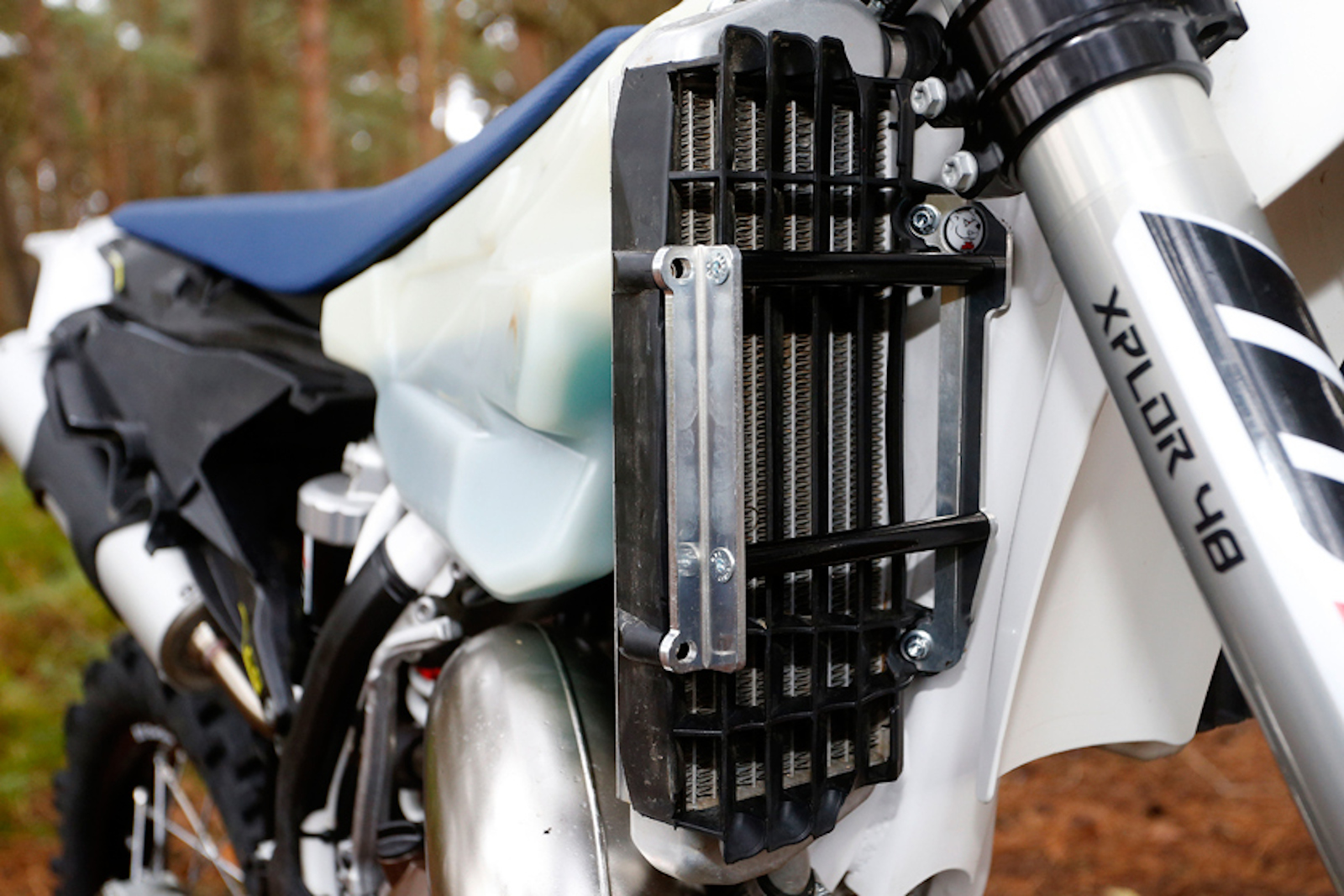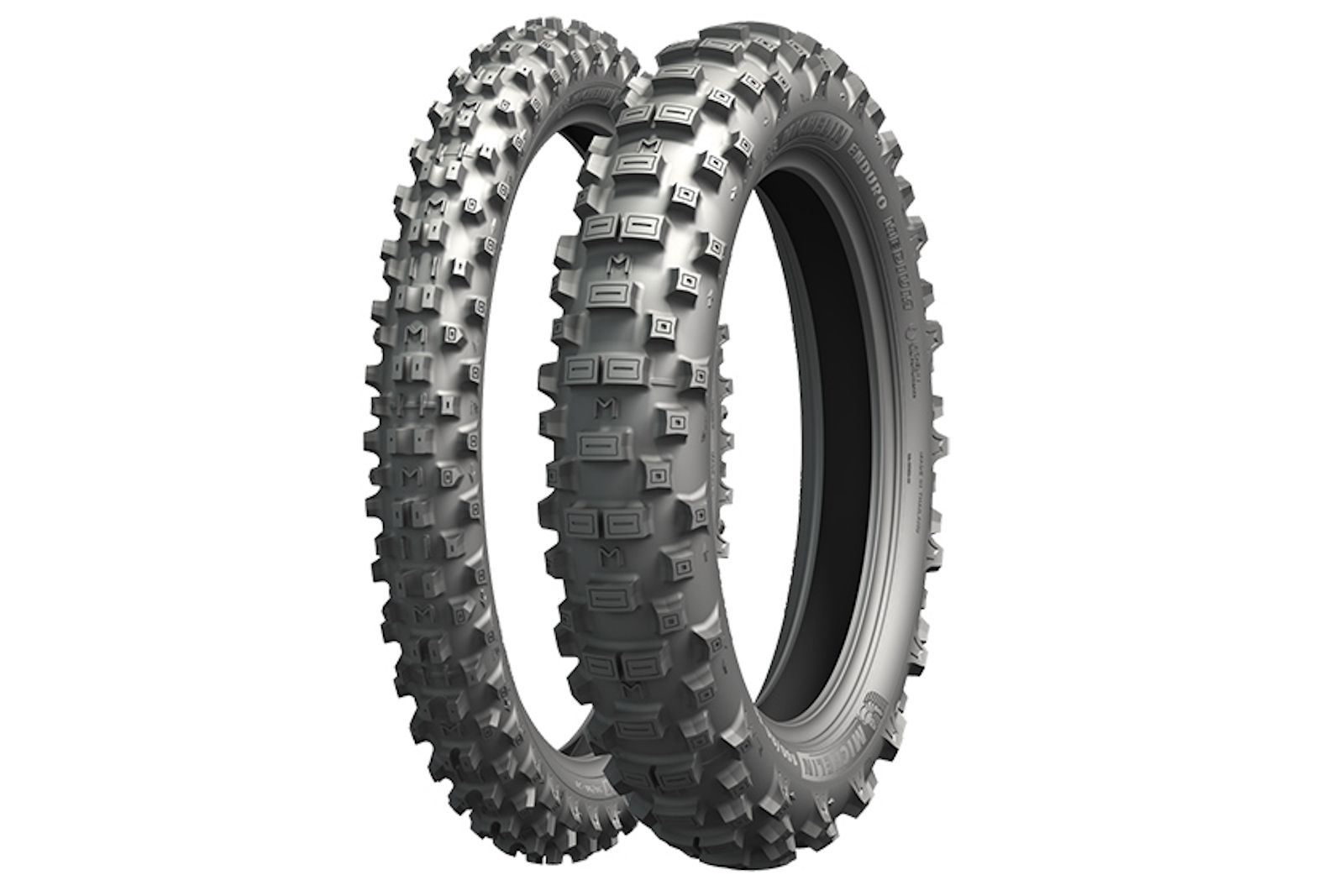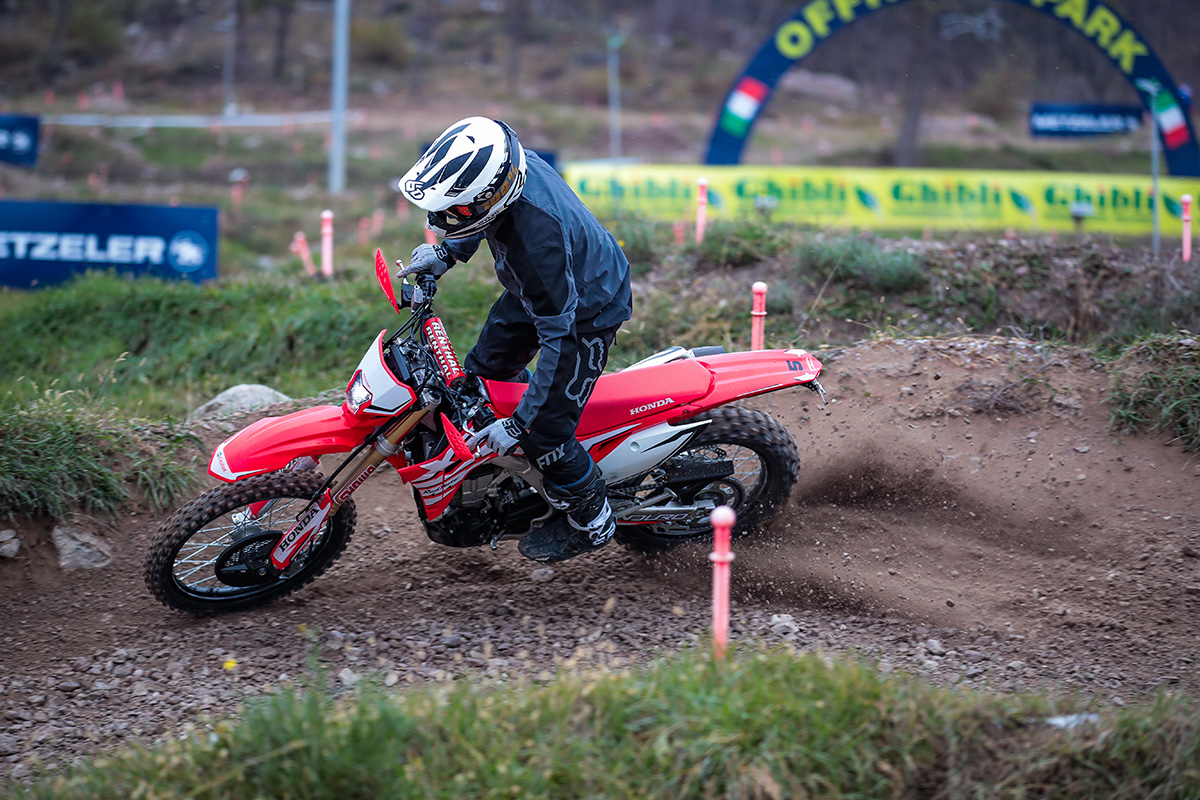Tested: 2023 KTM SX-F range – riding impressions and clues to the ’24 enduro range
Enduro21 spins some moto laps on the 2023 KTM SX-F models checking out some big changes to chassis’, discovering how the Austrian manufacturer is homogenising their four-stroke range (except the power) and ponders next year’s EXCs.
Bike development is slowing down. The pandemic, and subsequent parts supply issues, have compounded a pattern which has been forming for a few years now. Meaningful steps forward have gotten smaller and further between – although retail prices never do seem to follow that same pattern...
Like many manufacturers, KTM has slowed down their rate of progress as margins for improvement get harder to find. But the needle on the dial has shifted a little for 2023 as the SX model range (the precursor to the EXC range we expect to see the following year) takes some decent steps forward. Certainly it has been enough for the tub-thumping moto riders we know to get excited.
Which is why Enduro21 found itself hanging out with the moto boys again to test KTM’s new motocross bikes. Sadly, the fuel injected two-stroke models are behind with production so we didn’t get chance to poke around the new direct fuel injection SX300 just yet. But we did get to try the full SX-F range and there was plenty to get our teeth into...
What’s new?
Ignoring the lack of lights, their five-speed gearboxes and 19-inch rear wheels, what’s worth talking about here?
- 48mm WP split air forks with tool-free adjustment, last 40mm of fork travel improved plus new triple clamps and handlebar mounts to reduce stress and chances of bar twist.
- 15mm shorter and 100g lighter shock with same amount of travel. New linkage also helps improve ground clearance, plus new swing arm flex characteristics and fresh shock mount position (no longer connected to down tube).
- New electrickery includes a rollover sensor, LED hour meter with fuel status displayed, a quick-shifter as standard working off a gear position sensor with the ECU in 2nd to 5th gears (not 1st) and throttle position, along with traction and launch controls (which can be turned off).
- A whole heap of changes aim to make working on the bike better including one bolt seat removal and just two bolts to remove top of the engine to check valves.
- The subframe has “improved impact stability” and new exhaust mount points.
- A twist in the engine location in the frame repositions the front sprocket for less anti-squat. The 250/350 engine is also 8mm shorter.
- That means a completely redesigned head with new porting, valve timing, and cam. The result is an engine with more air flow and throttle response. The 250 also has a new bore and stroke for 500more rpm.
- All bikes have a new exhaust header and power bomb, use the same 44mm throttle body, and a smaller tank (7.2 not 7.5 litres).
- The new tank design means a symmetric design to the panels, plus a new front fender to shake off mud better.
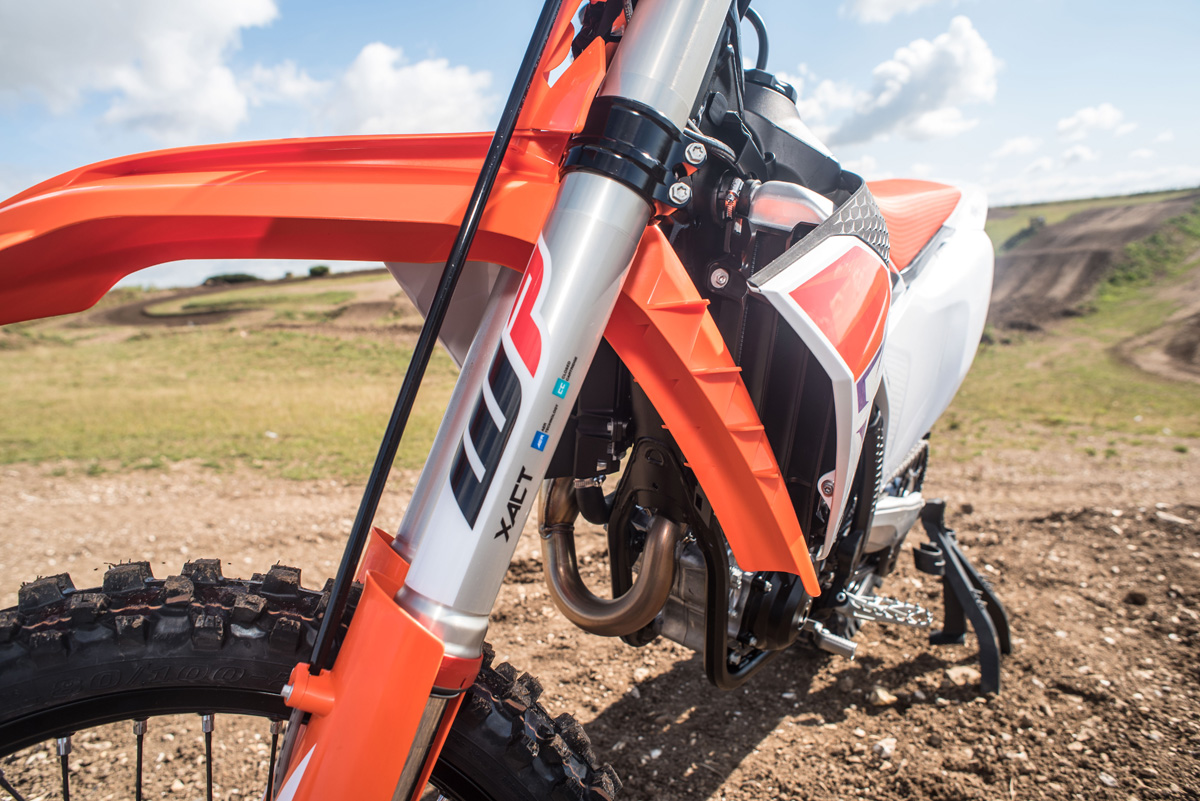
What are they like to ride?
Here’s one line which stood right out from the new model presentation. KTM is “moving towards standardised frames for all 4T models”. The idea is to make life cheaper and simpler for production, we’re sure, but this is quite a big step for owners and has some positive ramifications.
The most obvious point to make is you could in theory buy a 250 F and later, instead of forking out for a whole bike, just replace the engine and pipe for an upgrade. If you’ve already spent a bomb on chassis set-up, personal suspension, brakes etc, this could be a real thing and potentially save money.
Armed with this knowledge it’s not hard to feel that reality on the track. Back-to-back testing makes the differences clear always, it’s one of the beauties of this job when you get chance to run through a set of bikes and compare them, but from the outset is was clear the differences in the 2023 SX-F range is all about the engines.
250, 350 or 450?
Running order for us was a 350, then 450, a 250 and then back through them all, one at a time, in capacity order. It means you go from getting used to the track on one bike, to feeling the power and weight differences, gaining more confidence, getting faster, and in the end counting how many laps you get in before feeling tired. By the afternoon which one makes you feel better and which one was faster becomes clear.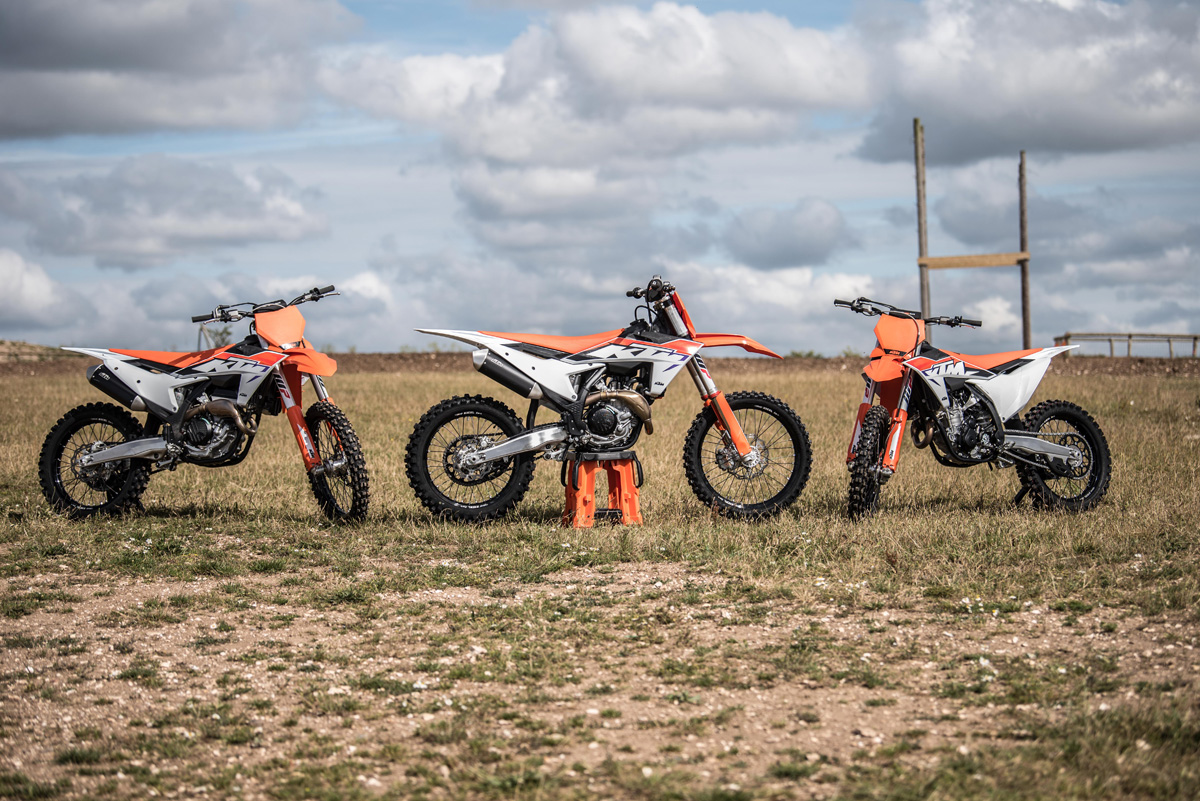
If all other elements are the same – brakes, the feel of the bike under you, chassis shape – then all you kinda notice is the power character, slight difference in weight, different suspension settings and which one’s got the heaviest clutch.
Honestly, that’s how it felt, three bikes with different amounts of power and weight. The 450 has a heavier clutch and rides like a rocket ship unless you cruise around in third or fourth. It’s fast as hell and a real buzz but for us at least, only a few laps.
The 250 makes you feel great, builds confidence and is the least tiring. Most people settle on the 350 as favourite because it is the best combination of all things. That’s why it continually sells better than anything else.
Some facts for you:
The 2023 SX-F range claimed bike weights are 101kg (250), 101.9kg (350) and 102.7kg (450). In capacity order they also produce a claimed 47hp, 57hp and 63hp. The differences in power far outweigh the differences in weight and, with almost everything else about the bikes being identical, it’s hard not to feel like you have three versions of the same bike.
Not that long ago we tested the Stark Varg electric MX bike and one of the big things there was having a variety of bikes in one. Effectively this is the same here with three quite different character SX-Fs depending on your needs and ability.
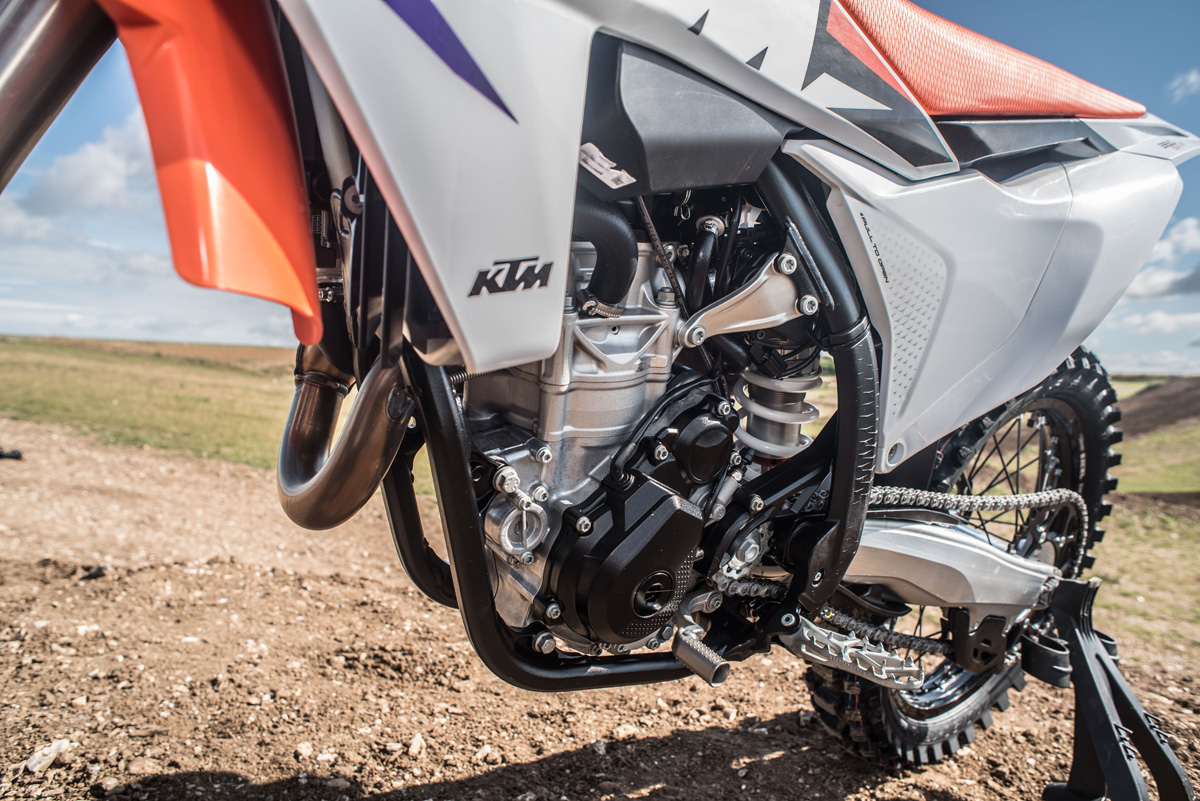
’23 chassis changes
A “completely new” frame design with more torsional and side stiffness, new thicknesses in the steering head, the change to the shock mounts affect the handling and stability and feedback.
Can you feel those differences? Well, yes, even as we get used to the fairly mighty MX jumps at this test track (watches the MX boys whip past), there’s something different going on here. A spin on a ’22 SX-F450 not that long ago also helps spot the differences.
The standout feature was more confidence braking, changing lines, hitting ruts and using the power through the corners. It’s always hard in isolation to pin-point exactly where’s the difference between new and old but we had enough time on each bike to get a positive feel for KTM changes and it is a step change.
The 2023 KTM SX chassis dishes out confidence in two areas – your feet and your hands. Aside from some of the little changes, like a single bolt to remove the seat or easier valve clearance inspection, what’s new for ’23 is bike more feel and control.
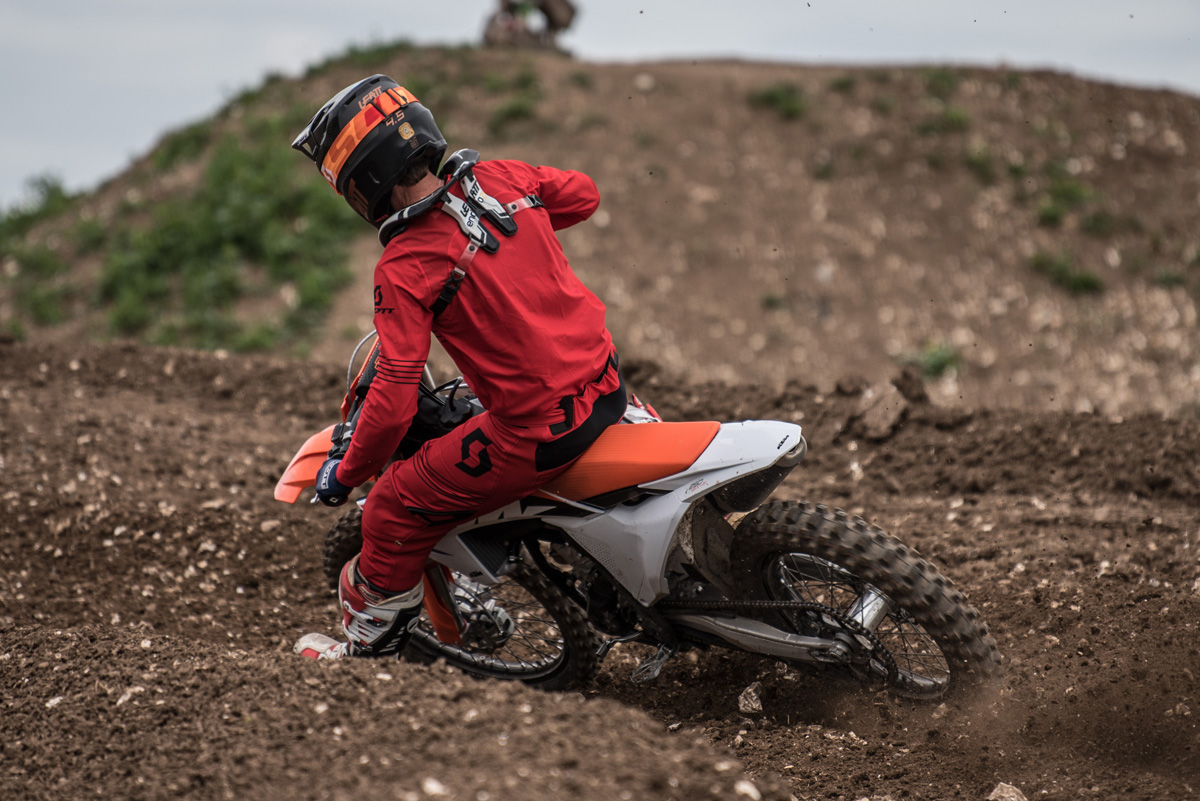
The feel of control through the bars is more positive – hitting those ruts and lines on the brakes or through a long, fast corner – is more accurate and that brings more confidence to ride a bit harder.
The new SX-Fs other noticeable change is in footpeg position and shape. An 8mm narrower peg mount point, plus an 8mm longer, and 5mm wider footpeg each side, makes them 26% bigger KTM say.
In reality that means they feel more like our own EXC in the garage fitted with Raptor Titanium pegs if we’re honest. It makes an othewise slightly alien MX bike seem comfortable and familair.
Like most the KTM/Husky/GASGAS Hard Enduro World Championship riders, we always fit the Raptors to our bikes because they are tough, lower and slightly further back in a position similar to the stock MX pegs.
The new position for the ’23 SX-Fs is slightly closer in towards the middle bike too. With them being wider too it provides more of a platform for the boot and it basically helps you feel more in control through your feet.
Looking forward to any potential EXC chassis updates is speculative but we can assume the changes up in the headstock and that shock mount position change will cross over, plus hopefully the narrower feeling footpeg position.
EXCs don’t have the linkage of course, so some of this feeling possibly won’t translate to anyone opting for the ’24 orange enduro bikes.
One thing we hope to see carried over is the free-revving 250F engine. It feels easier to carry gears than the old bike with less gear changes around the track and a more flexible engine to play with. On the 250 model which already breeds confidence, it was hard not to smile.
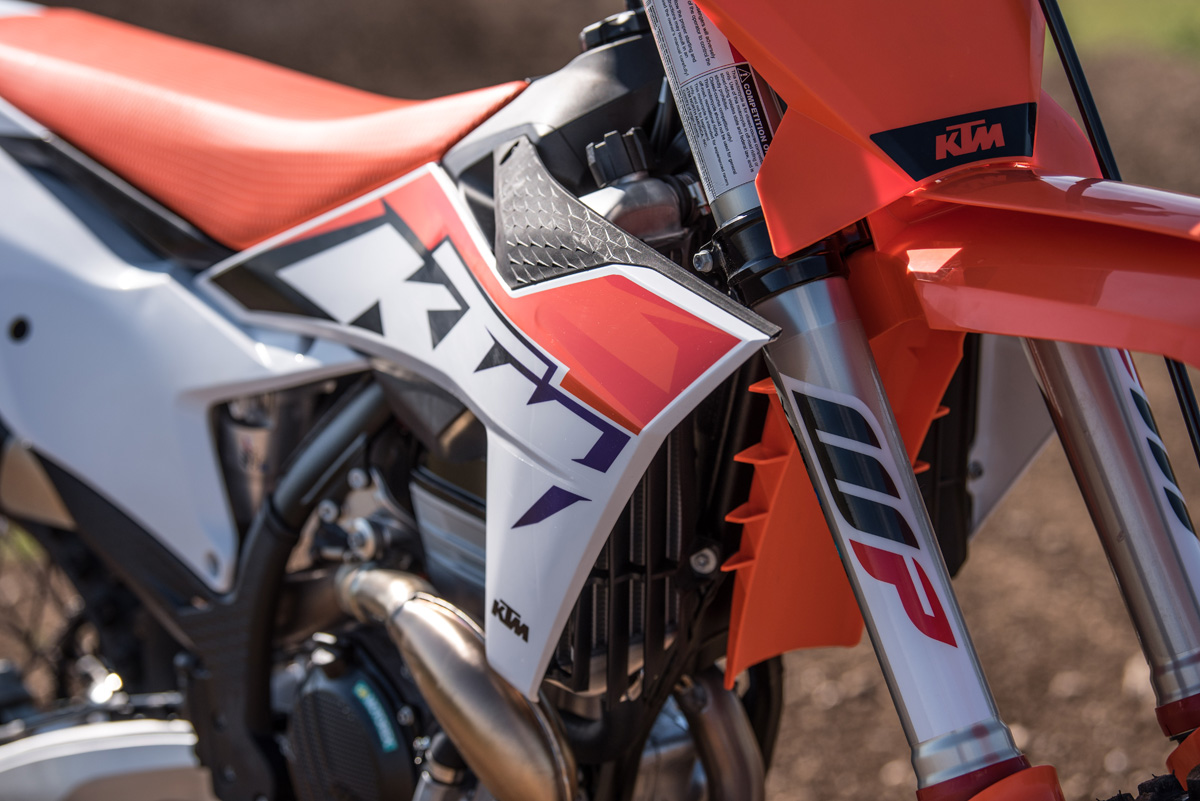
The big jump in power between the 250 (47hp) to the 57hp of the 350, and 63hp of the 450 is obviously quickly the major difference between them. The 63 horses can be subdued by using the softer engine map on the handlebars, or tuning the power with KTMs mobile tuner app.
You can also use it to your advantage and make the jumps you weren’t sure about, or carry high gears lazily around the track. But there’s no getting away from the fact this is an arm-wrenching weapon best exploited by the best riders.
As ever, the natural conclusion from a test is the 350 engine is favourite. The best blend of power over weight and all that stuff you’ll have read before now. It’s still true.
It could be personal preference but the stock MX WP suspension always feels like the set-up the EXC models should have. There’s more bump absorption in the final part of the stroke in these ’23 SX-Fs but overall, they are versatile where the EXC’s kit is too soft and the shock can cope with getting hot. Working hard is one of the major problems with the stock EXC rear suspension which can fade badly on a rough track, you don’t get that with the SX rear shock.
The SX bikes use the WP air forks of course, where many people’s preference for enduro is springs and it is worth pointing at the linkage rear suspension compared to the PDS-type EXC rear end.
It depends what kind of enduro you do, and we understand why KTM produce the enduro models with the softer suspension (it’s what most people who buy them are happy with), but after a test on the MX bikes it is hard not to feel like linkage suspension with stock SX setting is more on the money. Meanwhile the stock EXC set-up is better suited to trail riding and quite limited in the adjustment range.
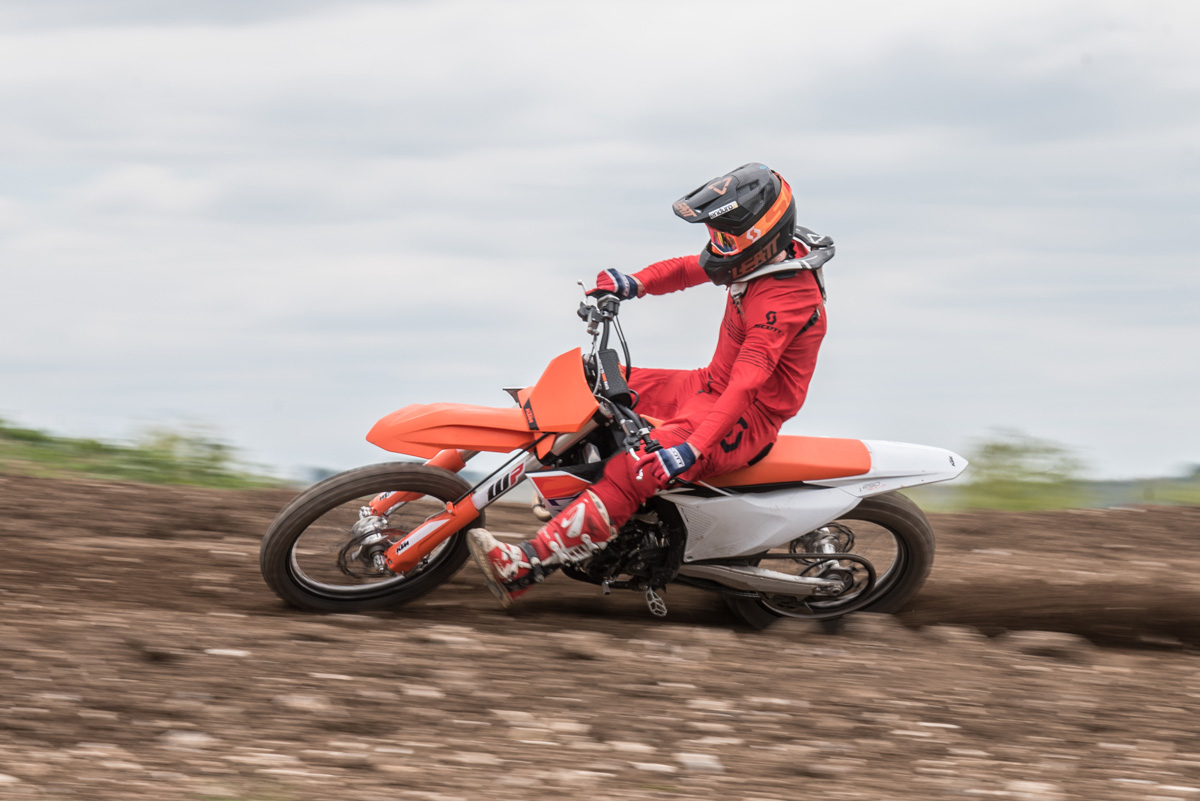
When we ran the ‘first look’ story on these ’23 SX bikes back in late Spring 2022, it quickly became one of the most-read stories on E21 as everyone looked at what we might expect for 2024 enduro model range. Partly the all-new 300cc direct fuel injection two-stroke fuelled that interest but there are some big changes to the 4T models too.
We’ll see how all this plays out in the 2024 enduro range. This test was just a day on an MX track so naturally not where we’d normally ride. But is was a good taster of the chassis changes and updated motors, both of which were positive steps forward form KTM.
Above all else we’re looking forward to testing the new 300 SX direct fuel injection two-stroke. When it lands, we’ll get a ride asap.
More information including specs and prices in your country: www.ktm.com
Photo Credit: TooFastMedia




